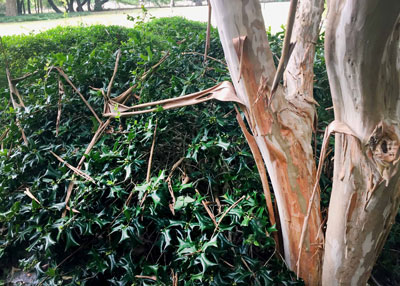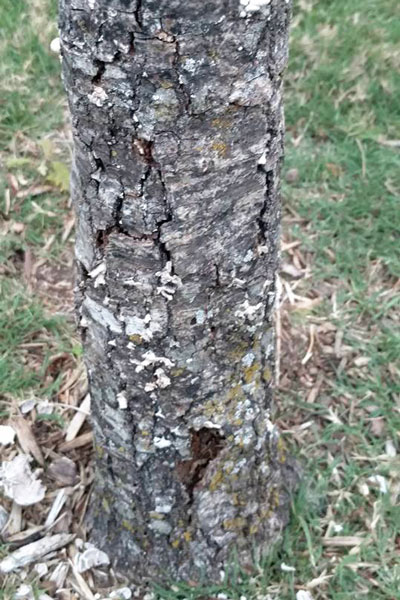Question of the Week #1: August 18, 2016
“Neil, my trees are losing big chunks of bark. Is this something that should concern me?”
Sloughing of bark is a routine process for almost all trees. Bark cells, you see, are dead cells. They grow to full size, then they die. As the tree’s trunk grows thicker (like a waistline), all it can do is pop off like the buttons on a fat guy’s shirt.
For some trees, like cedar elms and magnolias, that sloughing involves small chunks of bark that are hardly noticeable. However, for others like paperbark maple, river birch, sycamore, crape myrtles, and sometimes even pecans, those sheets are quite long and very conspicuous. But not threatening.
I took this photo on our hillside just a couple of days ago. Our Glendora White crape myrtle is going through its annual shed, exposing beautiful new trunk wood in the process. This is of absolutely no concern other than to remind me to tidy up the debris.

Crape myrtle trunk in Sperry landscape experiencing its annual bark shed this week.
It’s when oaks and Chinese pistachios, among other trees, start losing big pieces of bark that you begin to worry about sun scald, borers, decay and a particularly upsetting fungus that followed the drought of 2011. Here is information on Hypoxylon canker that our egardens advertiser Arborilogical Services has on their website. It is the best write up I have found.

Posted by a Facebook reader, this photo shows sunscald damage and subsequent bark splitting (later to be lost) on trunk of young red oak. Tree wrap at planting could have prevented this damage, which now may be past the point of no return.
So the answer to the question about bark loss could take two directions. Either it’s no big problem. Or it’s a really big problem. You have to know your tree, and you have to examine it carefully. If you’re in doubt, that’s the time to hire a certified arborist to visit the tree on-site.
